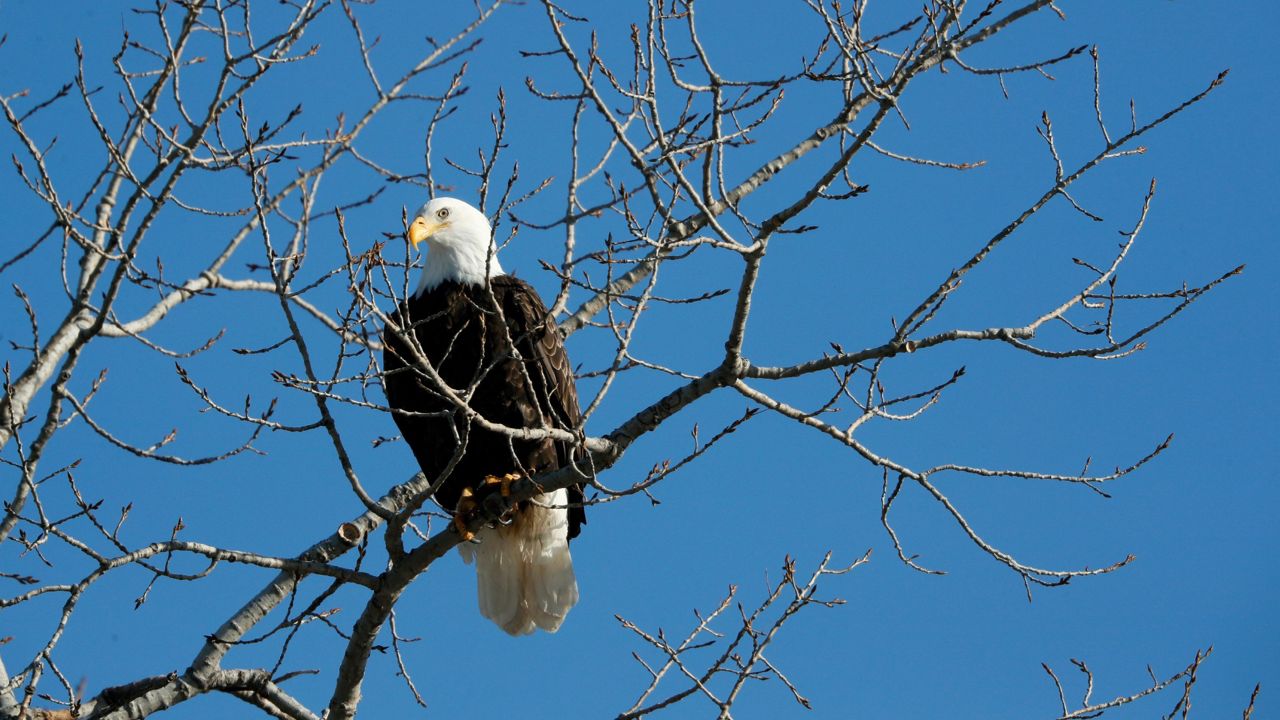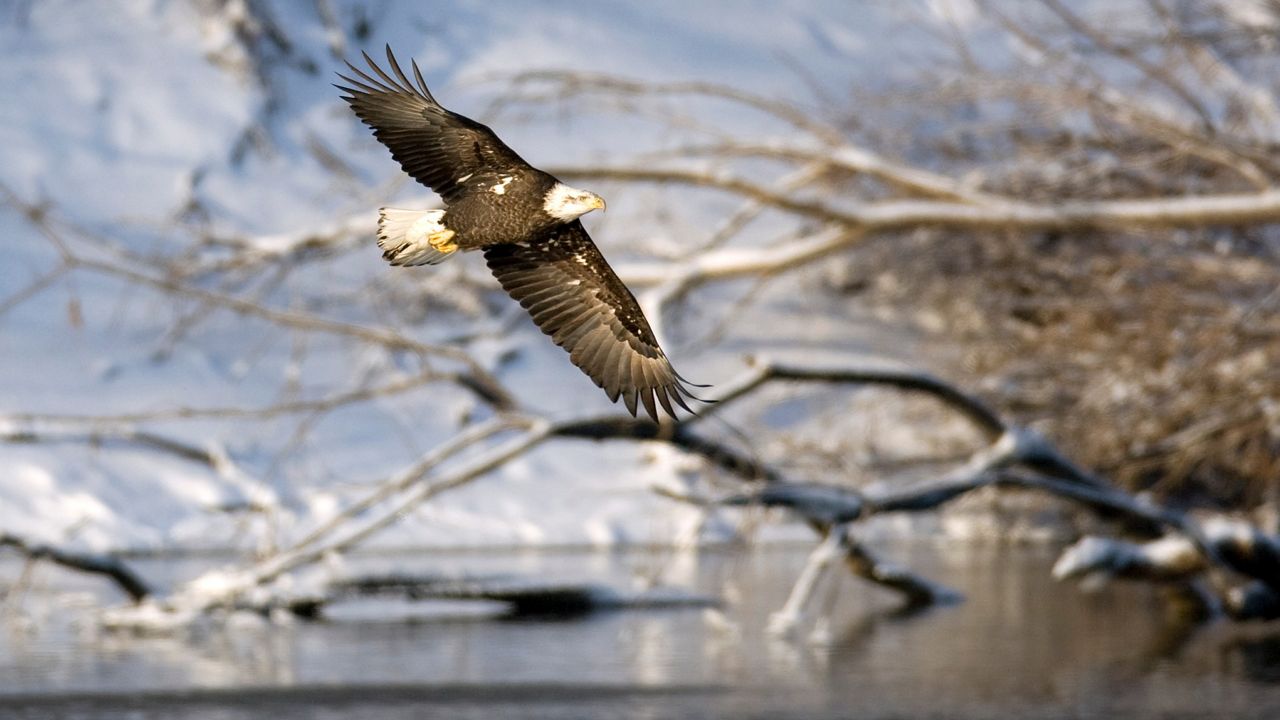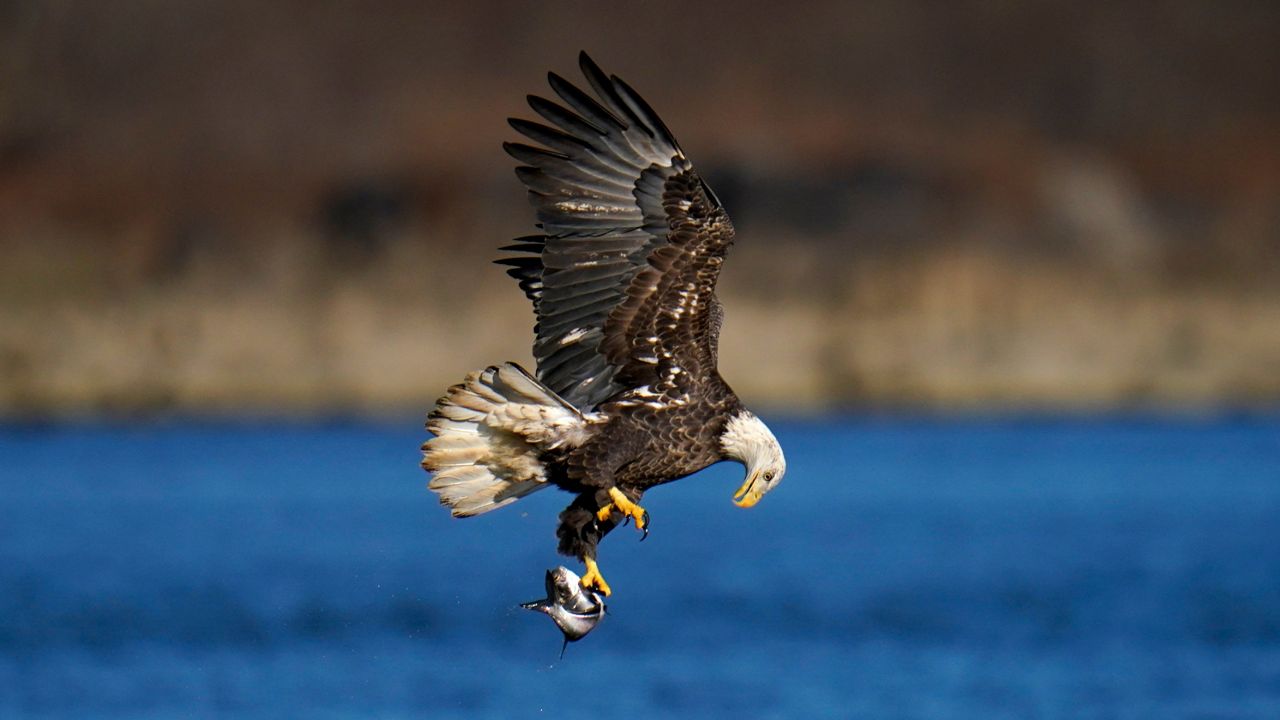Ready for a winter adventure?
Let’s face it, during the cold winter months, finding safe and fun outdoor activities can seem quite limiting but we could all use a change of scenery. Taking a brisk walk outside and getting some fresh air might just be what the doctor ordered.
And while you’re out, why not be on the lookout for bald eagles? That’s right, if you do choose to venture out during the winter months, your chance of seeing adult eagles is higher than any other season of the year.
Eagle behavior in the winter months keeps them more drawn to staying local and close to a food source, as opposed to the warmer months when they are more spread out over a wider area. Adult eagles tend to settle their roost in a spot that provides protection from harsh wind and allows the first morning light.
Your best bet is to find a wooded trail near a waterway. Eagles tend to perch high up on the tree tops and ideally they live near rivers, lakes and tributaries or wherever water flows in and out of frozen water areas.
These regal birds can be seen perched up high on the tops of trees, so that’s the first place you might want to look. You can also try scanning the sky above the trees. If an eagle flies nearby, you are likely to see it.
You are most likely to see them fly at meal time, generally just after sunrise through mid-morning and again around dinnertime.

Both males and females share nearly the same color palette of a dark body and white head and tail feathers, along with a yellow bill and feet. You can tell them apart by size, as the female eagle is one-third larger and heavier than the male.
These big birds have a wingspan of six to seven feet. While gliding through the air, eagles spread their wings straight out from their bodies while separating their feathers at the tips of their wings.

Bald eagles primarily feed on fish, although they do eat other birds and small mammals. Sometimes, when it’s convenient, and especially in winter, eagles will scavenge on carrion. Eagles have sharp talons that they maneuver to grab onto their prey. If you see an eagle swoop to the surface, you may bear witness to the capture of their next meal.
Adult bald eagles can be seen winterizing in December and the most popular months are January and February.
The bald eagle is easy to spot in plain sight and while not necessary, binoculars can come in handy.
Thanks to years of conservation efforts, the bald eagle has been removed from the Federal Endangered Species List although its status in some states is still considered to be threatened.
Want to learn more about bald eagle behavior in winter? Here’s a good read from the Adirondack Almanack.
Here’s to a healthy and safe winter season. I hope you can get out to see some winter wildlife close to home. Remember to bundle up in layers on colder days, hydrate, and pack your patience while seeking a glance at these majestic animals. And if you do spot a bald eagle or any other winter wildlife, please share your photos with me, Heather.Morrison@charter.com or @HeatherWxTv.



